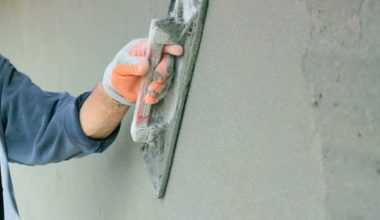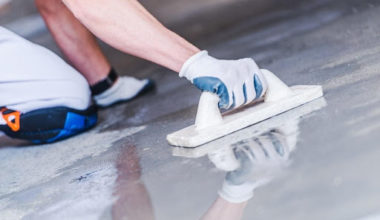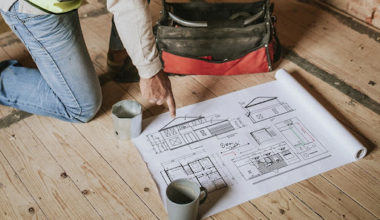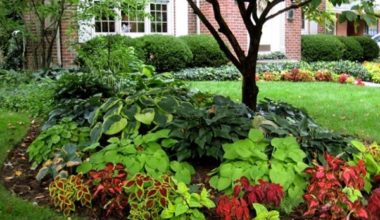Plastering is a cycle by which coarse surfaces of wall or roof rooftops are changed or turned or delivered to give perfection. Toward the start, wet materials are spread over the square or block works and afterward, appropriate gear is utilized to make the surface smooth level. The great motivation behind plastering is to get a hard and smooth surface that could be painted and give decent tasteful appearances. Recently, wall surfaces in present-day houses are done with blocks or impede or stylishly satisfying stones to show wonderful appearances. Wet materials that spread over wall or rooftop surfaces ought not be more than 0.3 cm. Nonetheless, there are surfaces with that abnormalities are more than 3cm. For this situation undercoat which is a minimal expense coarse grain material is utilized to deliver the surface followed by a finish coat that is a flimsy layer of fine-grain materials. Additionally, walls constructed from unpredictable and diverse size stones may require three covering. This is on the grounds that thick undercoats will in the general list because of the weight of thick wet plaster.
Sorts of Plaster based on Material Used
Lime Plaster
Lime mixture consists of sand and line that are mixed by 1 sand to 3 of lime by volume. Not just this mixture is utilized for undercoat yet additionally utilized as a finish coat. Lime plaster may be contracted subsequent to drying so creature hair of around 5 Kg is utilized for 1 m2 to keep away from lime plaster breaking and contracting. Lime plaster could be utilized for antiquated construction rebuilding and restoration.
Cement Plaster
For Cement Plaster, Dim powder Portland cement is mixed with water by the proportion of 1cement to 3 or 4 clean washed sand by volume as an undercoat for hard foundation for instance block walls and segments. A mixture of sand and cement may be plastic and require experienced and expertise work consequently plasticizer or lime is added to the mixture normally by volume proportion of 1cement:0.25 lime: 3 sand or 1 cement to 4 sand with a plasticizer. The plasticizer is a fluid that add to the mixture to ease plaster spreading over the surface.
Gypsum Plaster
Gypsum plaster is broadly utilized plaster materials that could be mined normally or delivered as a result. Along these lines, significant gypsum plaster is utilized as undercoat, finish coat and supplanted lime and cement comprehensively. Also, a little extension of gypsum is considered huge propertied that forestall shrinkages and cracks. There are different kinds of gypsum plaster that are created by warming gypsum somewhat for instance anhydrous gypsum fabricated by warming gypsum up to 170 Co, hemihydrates gypsum delivered by warming gypsum in excess of 170 Co. Besides, contingent upon applications for walls or roofs Gypsum Plaster can be arranged like projecting, undercoat, finish, one coat and machine applied plaster.
Foundation Surfaces for Plaster
Sort of plaster and its application differs relying upon the outer layer of the wall or roof which are set to be plastered. Blocks or squares with unpleasant and strong surfaces have method for mechanical attachment when plaster is applied to the foundation walls or roofs. The mechanical keys which stick solidified plaster to the surfaces is made after spread wet undercoat plaster is dried. Plaster keys restrict or limit shrinkage of the cement that is head part of undercoat plaster. Machine squeezed blocks with high thickness and smooth surfaces retain appropriate measures of water that will help to stick plasters to surfaces. The level of water ingestion by thick smooth surface blocks which aid plaster bond is called attractions. Squares delivered by lightweight concrete have huge forces of pull that forestall connecting plasters to surfaces appropriately. Thusly, it is encouraged to diminish water retention degree by either fluid groundwork or splashing water prior to plastering. There are two unique answers for surfaces with low attractions incorporate PVA holding specialist and polymer holding specialist. In the previous technique, the polyvinyl acetic acid derivation is brushed on a superficial level and plaster is spread over when the PVA is as yet tacky which makes a bond. In the last mentioned, surfaces are treated by a blend of silica sand and polymer and the bond is given by silica sand grain after the polymer is dried. There are different kinds of excited steel globules and stops which are delivered to utilize with plaster and plasterboard as point and stop reinforcement. The dabs are utilized at the intersection of wall to roof plaster and plaster to different materials. Stirred steel used as stops to make ideal completions at intersections of plaster to one more material at points, around windows and entryways, and evading as displayed in Figure 2.
Plaster Finishes to Timber Joists and Studs
Plaster spreading on wood slat is an old and conventional method that used to make level completed surface to the lumber floor roof and rooftops and stud parts. This technique is generally supplanted by gypsum plasterboard that is the reason further specifying isn’t given. Gypsum plasterboard is made of hard gypsum plaster that clung to two substantial papers which forestall harms came about because of taking care of and introducing of the gypsum plaster. It is produced with different thicknesses for instance 0.95 cm, 1.25 cm, 1.5 cm. furthermore, 1.9 cm that applied as dry coating or as plaster foundation in various size sheets. Gypsum plasterboard is generally used in roofs of lumber floors and rooftops as linings. Plasterboard is considerably savvy and could be introduced and plastered without any problem. Another remarkable benefit is impervious to fire since it is incombustible. Regardless, helpless sound protection and development or vibration cracks are disadvantages of plaster sheets.
Avoiding and Architraves
Skirts are limited bands made around wall base at wall and floor crossing point and made sufficiently able to oppose hits. It serves to underscore wall and floor intersection. There are different kinds of evading like lumber, metal, tile, and magnesite. Architraves are shape or structures which are utilized for improving purposes introduced around entryways and windows.
Outside Rendering of Buildings
For the most part, the outside face of structures constructed from concrete or earth blocks are not thought to be satisfying stylishly and don’t give alluring appearances. That is the reason the outer countenances are changed and delivered by a few layers of lime or cement mixed with regular total and completed finished or smooth. Also, rendering improves and expands wall impervious to entrance of downpour fall. Moreover, outside rendering is based on solid cling to the foundation, used mixtures, and surface completion.











